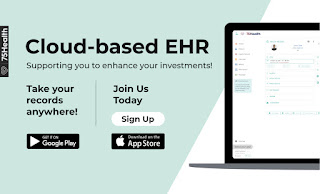4 Of The Best Features Of Electronic Health Record Software
Electronic
Health Record Software has become the golden standard for hospitals to
collect, store, and exchange medical data. The software not only eliminates
paperwork but also grants access to patient-relevant data regardless of
physical location.
Today, medical help is extended far
beyond a single physician, clinical staff, and lab people. The data is directly
used by state registries, pharmaceutical stores, emergency facilities, etc. as
each feature is enabled with HIPAA compliance.
EHR Software takes more functions in
a hospital from the reception desks to internal operations. It is capable of
creating a better experience for patients and physicians.
Front-Office Unit
Electronic Health Record Software is primarily intended for patient data
management, it is just not only for archiving patients’ data. It leverages available
patient data to deliver important insights using data analytics programs. The
software helps administrative personnel and clinicians to handle day-to-day
processes and easing the boring repetitive tasks into jiffy-active tasks.
Automatically tracks the recent clinical appointments and complies patient history with summaries. It allows the front-offices staff to manage peak times and monitors personalized healthcare plans, guidelines, and other protocols.
Doctors’ Support Unit
Electronic Health Record Software works as a doctors’ support unit
by helping physicians to organize patient records, create digital charts, monitor
treatment progress, and alert adverse results. It is built with the capability of
generating reports by targeting a particular metric -treatment, medication
lists, and instructions. Physicians can generate multiple reports for different
clinical needs through customized templates.
Billing Unit
The billing staff can directly take
information from Electronic Health
Record Software to manage the financial part of the patient’s treatment and
the clinic’s finances. After each visit, the invoices are sent to the patient’s
insurance company and handles claims, denials, and system exclusions. It analyses
the expenses of a clinic and detects spaces to restructure hospital policies.
Patient Portal
The online patient portal is a feature,
enabled by the physician on Electronic
Health Record Software, for patients to check their last visit’s records, manage
next follow-ups, request drug refills, and download customized reports. Patients
can pay hospitals bills through the patient portal as per their convenience –
credit card, debit card, net banking transfer, and UPI payments.
Conclusion
Electronic
Health Record Software is built with advanced multifaceted systems that cover
all medical practice tones to maximize efficiency and patients outcomes.
Adopting this solution seems to be a complex task but it is so easy today
because software is created with careful consideration, planning, and integration.




Comments
Post a Comment